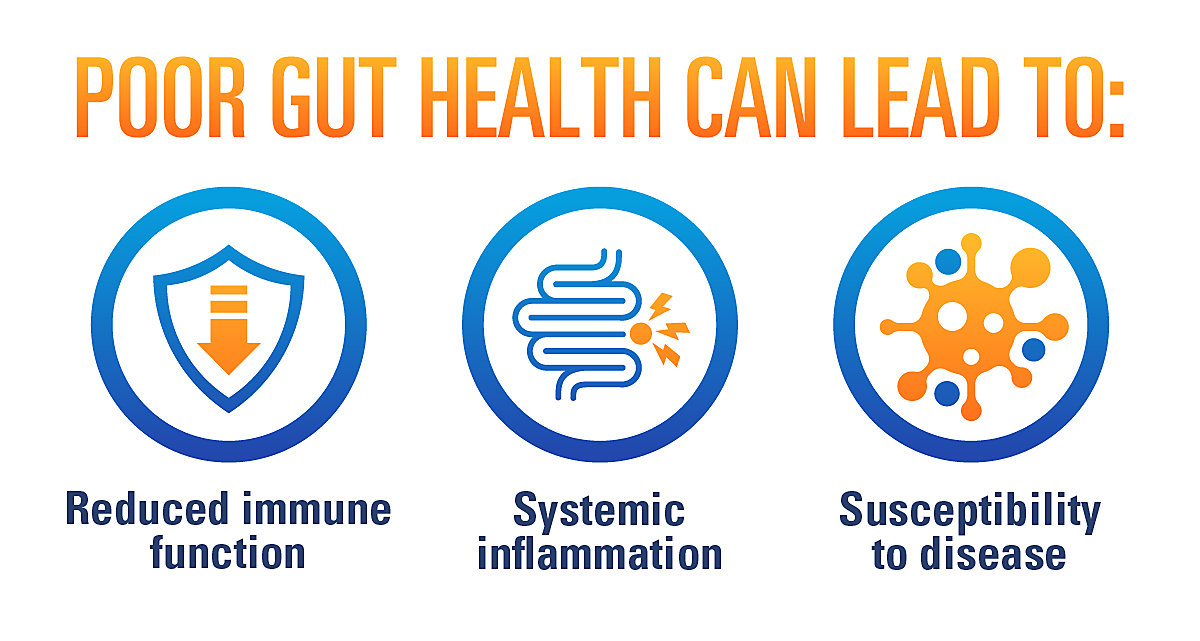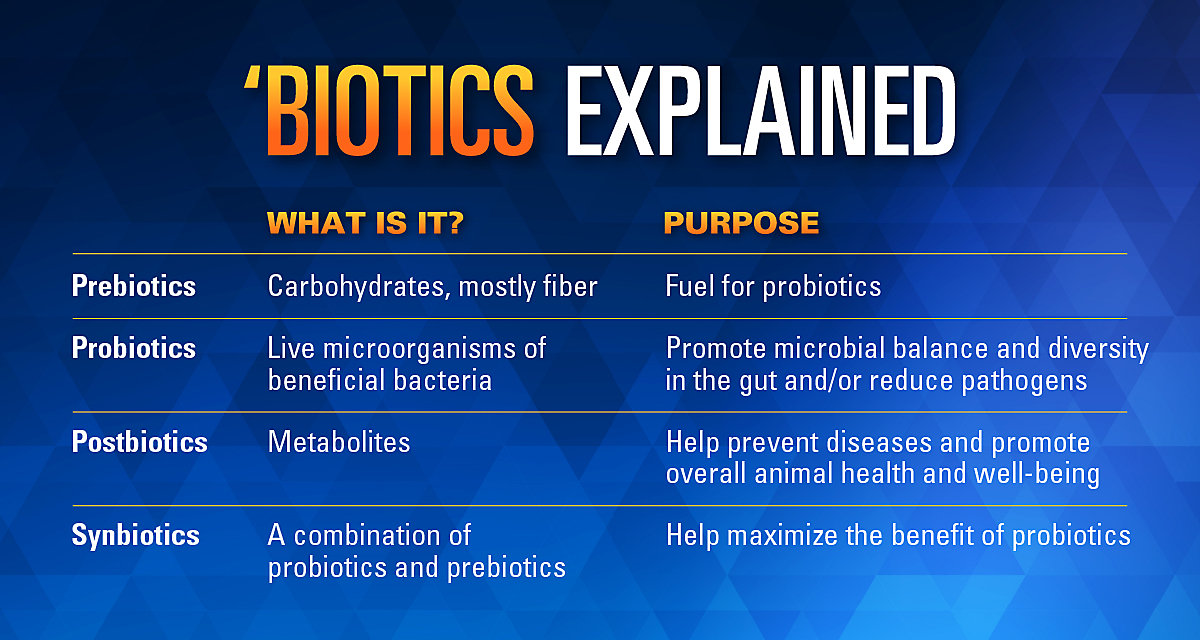The use of prebiotics and probiotics in livestock and poultry diets has become a common practice — and for good reason.1,2,3,4 Increased attention to and understanding of gut health in humans, pets and livestock have led to more research and effective solutions available on the market. In addition, producers are constantly searching for ways to fight pathogenic bacteria as antibiotic resistance grows.5
Did you know there are actually four 'biotics you should know about: pre-, pro-, post- and synbiotics? Let's look at each of the four categories, define what they are and discuss how they work together.
First, let's break downt the role 'biotics play in the overall health and welfare of your animals.
Why focus on gut health?
The gastrointestinal (GI) tract, which is susceptible to disease and sensitive to changes in diet, has a complex and diverse bacteria population called the microbiome that is critical to health.6,7,8 The microbes within the GI tract assist with the digestion of nutrients, stimulate immune response, help protect against external pathogens, neutralize toxins and regulate gene expression — all of which are vital functions.4,6,7,8 Poor gut health can result in leaky gut, leading to reduced immune function, systemic inflammation and susceptibility to disease.




